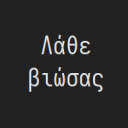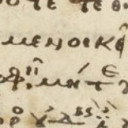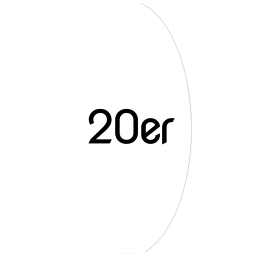Where Is Epicurus In The "School of Athens"?
-
-
Μyths and fairytales (Jesus and Saul/Paul) mixed with books and movies (Umberto Eco and Dan Brown) and a totally rejection of the two creteria of truth of the Canon which are our own eyes and our feelings for the examination on the issue: where and who is Epicurus on the fresco by Raphael?
The right answer is: well, the bust of Epicurus had not been discovered in the era of Raphael, so that we conclude that Epicurus on that fresco is that stupid little boy with the smirk and wreath on his head.
-
Have we seen this paper: https://www.jstor.org/stable/3046140
New Identifications in Raphael's School of Athens
Can't tell if it addresses Epicurus directly, but the abstract seems to contend that Raphael didn't use portrait sculpture for any of the portraits. Even Socrates was supposedly derived from textual descriptions. Also, if the Pope wanted to denigrate Epicurus's teachings, how fitting would it be to tell Raphael, "Yeah, use that pudgy guy to represent that atheist pleasure seeker if you have to include him." I agree it looks like Epicurus, but the trope of the bearded, robed philosopher was a common motif, wasn't it? I've also gotten the impression in the past that the figures to the immediate left and right of Plato and Aristotle were supposed to be their unnamed followers. I could be misremembering. Don't get me wrong. I'd like it to be Epicurus, but I need to see at least one documented reference to be convinced. Too many variables.
-
Can't tell if it addresses Epicurus directly, but the abstract seems to contend that Raphael didn't use portrait sculpture for any of the portraits. Even Socrates was supposedly derived from textual descriptions.
Not questioning you, Don, but the statement on its face. Can such a theory even be seriously entertained? We need that full article because this assertion I want to read in detail.
And yes I think you're correct to observe that even in the course of someone who is extremely anti-Vatican, and anti-Church, and slow to impute "good" motives to any of them, it would be part of the thesis of someone arguing Elli's point that Raphael (at least Raphael, if not his Church supervisors) wanted to be accurate in placing Epicurus in a position more consistent with his central role in Greek philosophy, rather than banish him to the edges or some other unflattering position. -
Elli: Given the new development about the changes in the two characters you are looking at between draft and final execution, maybe it's time for you (or someone) to update your article?
When you say:
Μyths and fairytales (Jesus and Saul/Paul) mixed with books and movies (Umberto Eco and Dan Brown) and a totally rejection of the two criteria of truth of the Canon which are our own eyes and our feelings for the examination on the issue: where and who is Epicurus on the fresco by Raphael?
I would say that it would be extremely interesting to see a discussion of that argument. I think it's easy to understand how your would assert that your senses (eyes) bear on the issue, but not so easy to explain how "feelings" play into the assertion. After the evidence of the eyes (which I think is strong), I would think that we are left with little more than a long chain of deductive reasoning based largely on hearsay as to the proper identification of the two figures. I think it would be useful to discuss through this example how an Epicurean DOES used deductive reasoning (tied closely to the senses) just as Epicurus used deductive reasoning throughout his physics.
And the article could also discuss how it becomes very difficult to get out from under a consensus after it is long formed and has assumed the air of an authority, but that an Epicurean will trust his senses and his own reasoning (if he is confident enough of it) against a consensus of other people no matter how large that consensus might be, depending on the evidence.
I tagged you in a note about the article that Don linked to - here is a statement in one of its footnotes that makes the point that I simply cannot /do not accept as true.
It looks like the article contains a lot of good historical information even for someone (like me) who rejects certain of its fundamental premises from the start. The idea that Raphael had no models to work by and guessed at the central figures from descriptions, but that his "guesses" proved so accurate to the busts in so many cases, strikes me as absurd. Hopefully as I read further into the article the writer won't take an extreme position on that.
OK I have read it. He does take the pretty extreme position, but the article is focused on disputing the identity of the figure sitting on the steps in front of Plato and Aristotle, which the write says is Socrates rather than Diogenes the Cynic, as is apparently the consensus today. Some reasonably good arguments in it, but the contention flies in the face of the other Socrates figure being a dead ringer for the bust that is today identified with Socrates. Maybe the identification of the bust of Socrates and his location in the picture is wrong, but since the article is really based on the contention that Raphael had little or no knowledge of the ancient busts, i am very skeptical.
-
To be clear: I certainly think Elli's assertion deserves respect and scrutiny. My position currently is that an Epicurean approach is to have an open mind and to not defend one position at this time until more evidence is available, much like the texts do with meteorological and astronomical phenomena: it could be x, y, or z with our current information.
It could be Epicurus depicted in the smaller background figure.
It could be an anonymous figure to fill out the composition.
It could be a pre-Socratic bearded philosopher.
It could be an unnamed student of Plato situated near his master.
Those are just some of the options available at this time.
-
Yes I am wanting to be very specific that I am not criticizing you (Don) or Joshua or anyone else personally, including Takis, for their positions on this issue.
I think the whole question presents a very interesting and clear way to discuss many issues of epistemology in a low-impact setting devoid of political or other aspects that would introduce bias or emotion too much into the picture.
You've listed a good set of various possibilities as to the result, and it would be equally interesting to discuss some of the issues that Elli is raising about - "Given the evidence, what are the possibilities for how to process that evidence? How much do we defer to consensus, or authority, or speculation, and when does speculation based on "some" evidence rise to the level of something to be entertained, or believed, and when does it not?"
I see the question of "when do we defer to the consensus of authorities" and "when do we pursue our own judgment that conflicts with those of authorities" as maybe one of the most important and regularly-occurring ones that we could address.
Certainly it seems to me that Epicurus was in almost complete rebellion against the philosophic opinions of his day, so we know that willingness to take an independent stand was important to him, but I think we have a long way to go to describe how he himself dealt with prior consensus and authority, or how we can apply his example ourselves.
-
Yes I am wanting to be very specific that I am not criticizing you (Don)
Oh, none taken!

-
The idea that Raphael had no models to work by and guessed at the central figures from descriptions, but that his "guesses" proved so accurate to the busts in so many cases
If I remember correctly, Socrates is described pretty thoroughly in the texts. Are there extant ancient statues of Plato and Aristotle?
-
I'm going by:
https://en.wikipedia.org/wiki/Aristotle
https://en.wikipedia.org/wiki/Plato (now that one might not bear much resemblance due to the age issue)
https://en.wikipedia.org/wiki/Socrates
Of course it is hard to know whether or how these were identified as being of the people asserted.
-
Oh, have y'all heard the theory that Epicurus is the figure coming down the steps beside Diogenes and pointing back at Plato and Aristotle? If not, getting notes together to upload tonight. I like the idea of Epicurus' representation having a more prominent place.
-
If there's one thing I've learned from this discussion, it's that the medieval world and its inhabitants were utterly revolted, intimidated, and threatened by Epicurean philosophy, and they did everything that was humanly possible to erase his legacy from history.
And yet, here we are.

-
Nate you are the artist among us. What are your current thoughts on this question?
-
I noticed today (& I'll upload later) that the Epicurus figure proposed by Elli is designated as Speusippus by some https://en.wikipedia.org/wiki/Speusippus?wprov=sfla1He was Plato's successor and so it could make sense for him to flank Plato.
-
Okay, as promised, here are the interesting items I found today. If I'm re-hashing anyone else's research, mea culpa! I'm not able to share the entire JSTOR doc due to copyright, but I'll share the citations and relevant parts. This definitely shows that the pudgy wreathed individual was NOT accepted as representing Epicurus by everyone (especially by these 2 authors from the 1800s and a more recent author). The ambiguity of the composition as well as the lack of notes by Raphael himself leads to conjecture, but, as I state again below, I like that Epicurus is possibly given a central placement by these authors with some sound reasoning. Still not entirely convinced, but this shows it's not a cut and dried Pudgy Guy = Epicurus equation.
1)
RAPHAEL'S "SCHOOL OF ATHENS"
Author(s): Gertrude Garrigues
Source: The Journal of Speculative Philosophy , October, 1879, Vol. 13, No. 4 (October 1879), pp. 406-420 (Excerpt, p. 417)
Published by: Penn State University Press
Stable URL: https://www.jstor.org/stable/25667781
"Over his "Garden" in Athens might have been written the noble aphorism of Goethe, " Think of Living." Democritus had a glimpse of this high thought, Aristippus saw it "darkly," too, but to Epicurus is due its embodiment ? to his followers, alas, its prostitution.
Perhaps the finest episode of the picture, certainly the strongest antithesis, is the contrast of Cynicism and Epicureanism, as represented by their chief exponents. Lying negligently upon the middle step (Raphael was no ascetic) is Diogenes of Sinope. His eyes fixed upon a tablet which he holds in his hand, he is absorbed in thought. His drapery is scanty and poor, but he has not yet reached the lowest point of his voluntary destitution; his bowl stands on the step beside him. Mounting the steps we see a young man, handsomely dressed. He has heard of the congress of philosophers, it seems, and has come hither to seek a master. Meeting a stranger (Epicurus, also richly dressed) descending, he inquires of him, "Who is the greatest teacher here? Surely this man, who exhibits so much contempt for all the luxuries and gauds of life; who, solitary, has no need of companionship." Epicurus points to the triumvirate above, telling him not to stop on the way, but seek always the highest good; and bids him not to trust too much to an appearance whose only characteristic may be its singularity. We seem almost to hear the echo of words like unto these of Emerson: "It is easy in the world to live after the world's opinion; it is easy in solitude to live after our own; but the great man is he who, in the midst of the crowd, keeps, with perfect sweetness, the independence of solitude.""
So, Garrigues sees Epicurus as the figure descending the staircase and speaking to the person coming up the steps beside Diogenes. I do think having that reclining figure be Diogenes of Sinope makes the most sense. That cup beside him isn't hemlock (like the other recent author we found who says that's Socrates and his cup of hemlock). That's Diogenes last remaining possession before he was embarrassed by the child using his hands to scoop up water, then Diogenes throwing away his cup. **IF** there was no portrait bust for Raphael to go by, he could make Epicurus appear any way he wanted. I personally like the idea of the striding figure descending the steps rather than the pudgy wreathed librarian... even if he is a librarian.
2)
https://archive.org/details/raphae…ge/128/mode/2up
Raphael d'Urbin et son père, Giovanni Santi by Passavant, Johann David, 1787-1861
See p. 128
(I'm using Google Translate to get this translation)
In the middle of the steps, Diogenes of Sinope, named the Cynic, lying negligently, holds a tablet in his hand, and seems to be meditating deeply, without taking care of the illustrious assembly which surrounds him.
This singular man (born 414 years BC), disciple of Antisthenes, founded the severe school of Virtue, which he interpreted as an absolute renunciation of the material things of life. He thus expressed the basis of his doctrine: “To need nothing is proper to the gods. To need only a little is to be like the gods. So we see near him his bowl, the only utensil he wanted to have - until he recognized its superfluity, seeing a child draw water from his hand to drink.
Contemporary with Cynicism and Stoicism, Epicureanism differed on several points. The founder of the Epicurean sect, Epicurus (born 34 ^ years BC, in Gargettus, near Athens) also tended towards personal contentment, but he sought happiness in the harmony of moral pleasures and sensual pleasures. The Epicurean practiced virtue and wisdom only in view of their consequences and as a means of pleasure; he lived soberly and fraternally, and mastered both joy and suffering.
The fresco shows Epicurus descending the steps of the estrade, he converses with Aristippus', named Metrodidactus, a young man with curly hair, in a rich costume, and he indicates to him with a gesture the proud Stoic, disdainful of sensual pleasures.
The Greek genius, in search of a solution to the universal enigma, had exhausted itself in these multiple attempts. When the great men disappeared, there remained only sects which crossed and clashed.
This confused transition is indicated by the young man leaning against the base of one of the columns of the vestibule. Equilibrium on one leg, the other leg crossed in the air, he writes on his knee, not what his own research has taught him, but what he has heard from here and there. 11 represents Eclecticism which begins.
But while Eclecticism grasps all that seems to it to be true in the different systems, Skepticism, emerging at the same time, goes so far as to maintain that one can prove the falsehood of all established truth - a tendency which would have as a result the annihilation of all science, of all philosophy.
Pyrrho d'Elis (born 3M years BC) is the representative of this skeptical philosophy, which has even been given its name (Py rr honism). ^ E will not be accused of levity, if we designate , as Pyrrho, the standing and inactive philosopher, who leans against the base of a column and looks sarcastically into the book written by the young eclectic.
Standing next to him, the philosopher who, by a movement of hesitation, turns his head to one side and the body to the other side, must be Archilaus of Pitane (born 318 years BC), the founder of the new Academy, whose theory leaned towards Skepticism, the practice towards Stoicism. In general he only concluded with problematic knowledge, and, as all reason is subject to contradiction, he believed he should refrain from any decided adhesion.
I like the idea of Epicurus taking center stage, so to speak. And it would make sense that Pyrrho is nearby Epicurus since Epicurus had some degree of respect for him. They could be placed together.
3)
https://www.researchgate.net/publication/30…ol_of_Athens%27
Codes and Messages in Raphael's 'School of Athens'
August 2016
State: In Progress
Authors: John Douglas Holgate, St George Hospital
See the entire article. The author does a lot of work identifying Renaissance scholars and matching up possible representations of Greek philosophers. His identification of Plato's successor Speusippus is interesting. The figure does look like the 1655 woodcut in the Wikiedia article https://en.wikipedia.org/wiki/Speusippus
As for the pudgy, wreathed figure most often identified as Epicurus by modern "scholars", this author identifies him with Democritus:
"Democritus of Abdera (ca 460-370 B.C.) was a student of Leucippus and was the founder of atomism. His major work was The Great Diacosmos (World Order). Raphael has cheekily placed Pope Julius the Second’s emblematic wreath of oak leaves on the head of the atheist Democritus while doubling his likeness with that of his close friend the poet and actor Tommaso ‘Fedra’ Inghrami, the Vatican Librarian and Papal Secretary who was probably the main source for the philosophical content of the painting itself."
This author identifies the person with the long flowing hair ascending the stairs with Epicurus (p. 30):
"Epicurus, whose philosophical message was ataraxia (freedom from fear) aponia (absence of pain) and the importance of friends, here gestures towards Diogenes the Cynic asking Crates how this life of askesis (shamelessness) and social alienation can be justified. Crates, a student of Diogenes, points in the direction of the Stoics Chrysippus and Crates’ former pupil Zeno of Citium blaming them for the mist of confusion Stoicism had caused. As the sixth scholarch of the First Academy Crates founded the tradition of radical scepticism and the
rejection of Platonic idealism continued with the Second and Third Academies under Arcesilaus of Pitane and Carneades respectively."
"Pico della Mirandola (known for his long curly locks) is here masked behind the figure of Epicurus. The Renaissance scholar Christiane Joost-Gaugier argues in her book ‘Raphael’s Stanza della Segnatura’ (p.95) that Pico can be seen ‘as the young man seen from the back
who actively enters the painting and implores with his hands on Aristotle’s side.’ Mirandola was in fact a strong critic of Aristotle and an apologist for Epicurus, re-evaluating his notion of pleasure. Here Pico is appealing to his nephew Gianfrancesco to explain the tragic situation of Pico’s mentor Savonarola just as Epicurus is asking Crates to vindicate the life of his teacher Diogenes of Sinope."
So, it appears that there is no consensus, or at least wasn't, as to where Epicurus was in the fresco. The authors from the 1800s certainly associated him with the figure descending the stairs. I personally like the look on his face as he points back towards Plato and Aristotle as if to say, "Look at them! All high and mighty. They haven't got a clue!" and he hurries down the steps away from them.
Personally, I found this a LOT to chew on.
PS. The two men ascending and descending the steps were seen as on composition as evidenced by this sketch for the larger work:
-
Great research and thank you!
But I have to say that the speculation that either the descending figure (blue) or the ascending figure (long hair looking away) seem to me to be absolutely and totally fanciful and I see no way in the world that these guys had anything to go on other than sheer speculation.
Do you gather that they had any reasoning other than wanting to put Epicurus in the scene?
-
I get the feeling that it's their dismissive gestures toward Diogenes for one thing, but I'd have to read all three of the papers fully to follow all their arguments. I literally did Ctrl+F or followed up on a citation.
I will say I find the identification of Speusippus compelling though, especially due to his proximity to Plato.
-
As to the Speucippus that's based ONLY on proximity, correct? Or are there likenesses or descriptions of Speucippus that support that?
-
As to the Speucippus that's based ONLY on proximity, correct? Or are there likenesses or descriptions of Speucippus that support that?
It certainly looks like the 1655 woodcut that illustrates his Wikipedia article, but I'm not sure if that was based on Raphael or independent.
Plus, the idea that all those to the side of Plato were associated with him makes sense to me. Plato and his posse.
As I said, I also like the idea of seeing Epicurus as an active figure rather than passively hanging out in the background.
-
I also just saw that the conjecture is that Leonardo da Vinci was the inspiration for Plato and not a classical sculpture. I can see the resemblance.
-
Unread Threads
-
- Title
- Replies
- Last Reply
-
-

-
Epicurus' Public Domain Translations - All At Once In One Place 6
- TauPhi
April 2, 2025 at 5:46 PM - General Discussion
- TauPhi
April 4, 2025 at 10:36 AM
-
- Replies
- 6
- Views
- 322
6
-
-
-

-
Anniversary of the Founding of Alexandria in 331 BC (Mon, Apr 7th 2025)
- Joshua
April 3, 2025 at 10:16 PM - General Discussion
- Joshua
April 3, 2025 at 10:16 PM
-
- Replies
- 0
- Views
- 96
-
-
-

-
A Lovely Little Way to Refer to Memories
- Don
March 30, 2025 at 12:17 AM - General Discussion
- Don
March 30, 2025 at 12:17 AM
-
- Replies
- 0
- Views
- 211
-
-
-

-
New Religious Landscape Study from Pew Research 26
- Don
February 26, 2025 at 10:40 PM - General Discussion
- Don
March 28, 2025 at 2:35 PM
-
- Replies
- 26
- Views
- 1.7k
26
-
-
-

-
Potty Language
- Eikadistes
March 27, 2025 at 10:57 AM - General Discussion
- Eikadistes
March 27, 2025 at 10:57 AM
-
- Replies
- 0
- Views
- 181
-

